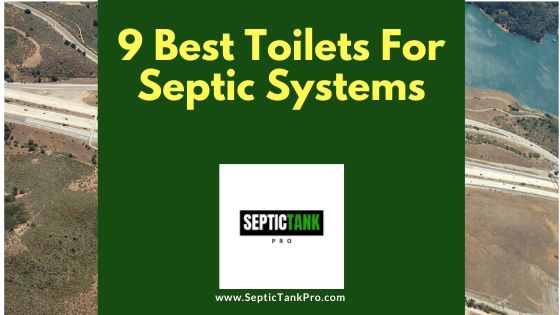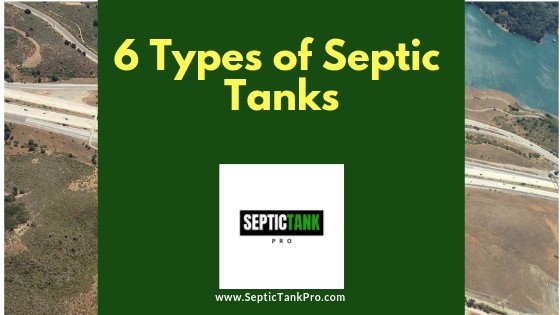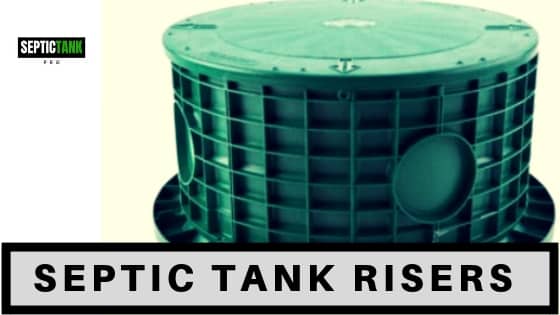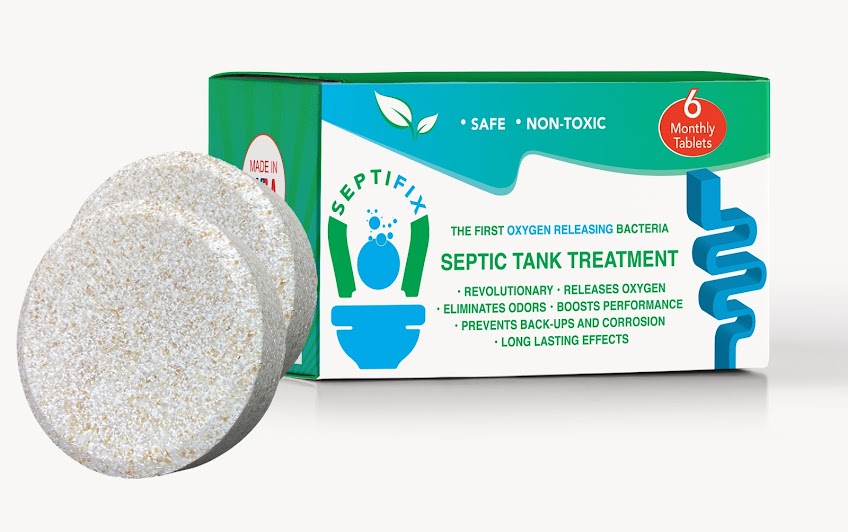Best Toilets For Homes With Septic Systems
The toilet is certainly an absolute necessity in every household or business establishment. Toilets are likely our most-used utility, yet they are not often addressed as a topic for consumers. The toilet is such an integral, natural part of our lives that a lot of us actually go by days not even giving it a thought. Well despite not getting much thought in our daily lives, there are some specific considerations you should make when choosing a toilet in a home serviced by a septic system.
What Toilet Considerations Come with a Septic System?
While a lot of us don’t really think too much about what happens in that part of the bathroom, a basic knowledge of toilets can actually be beneficial. This is especially true if you live in an area that relies on private septic systems, as opposed to a municipal sewer system. It is essential to do everything you can to reduce water usage to prevent an overflow of wastewater.
Now, if you own a property that relies on an on-site dedicated septic system, water conservation is likely a foremost priority.
If you’re in the market for a new toilet or looking to replace your existing unit, you must be wondering: Which is the best toilet for my home? Unfortunately, there is no single answer to this question. Some families may require a toilet to suit a range of special needs like for members who may be small, elderly, tall, big, arthritic, and so on. To others, the design is a concern to suit a specific bathroom. Still, others might be looking for a strong and reliable flush.
Occupants of households that run on septic systems may know what should and should not be allowed down the drains. Grease, oil, harsh or toxic chemicals, feminine hygiene products, and diapers are just some of the items to avoid. People are also aware that having a garbage disposal unit can also be detrimental to a septic system due to the volume of solid waste it imparts to the system. But most people don’t realize that the type of toilet installed can have an impact on the health of their home’s septic system as well. A good grasp of even just basic septic system care should be able to guide you in what type of toilet is best for your septic system.
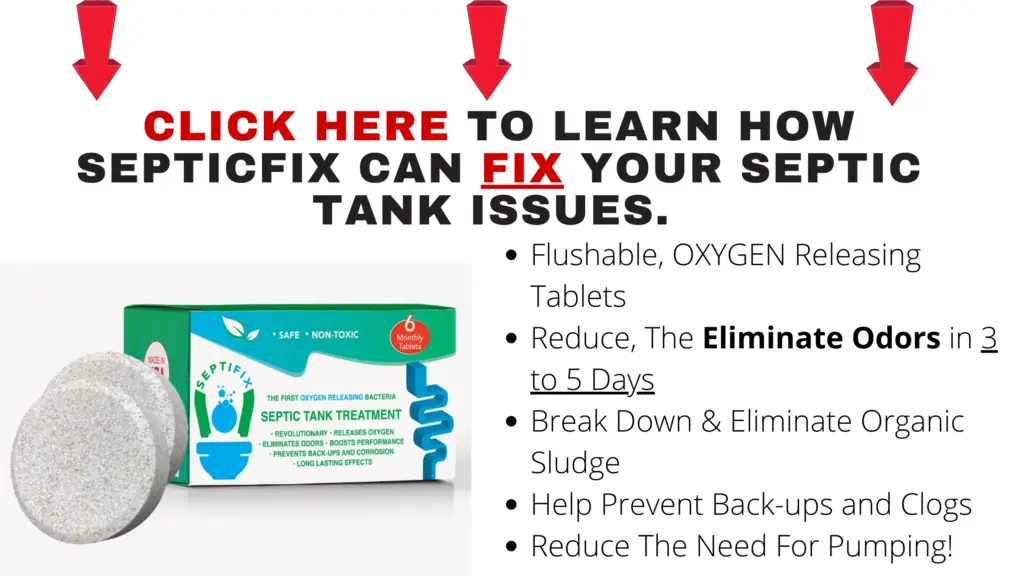
Why Water-Efficient Toilets Are Perfect For Septic Systems
A family of four uses an estimated 400 gallons of water each day. Approximately 70% of that is for indoor use, and an estimated 30% of this indoor use water is for and by the toilet. The U.S. Department of Energy has prescribed that a toilet must not use more than 1.6 gallons per flush, which is why no current models are designed beyond that capacity, save for some commercial applications.
What you must now consider is that toilets of older models use anywhere between 3.5 and 7 gallons of water per flush. Now, if that toilet is flushed ten times in a day (and we all know that this is a highly conservative number), it is easy to imagine how much excess water is used over a period of weeks, months, and years. Now, think of your septic system: it can back up and fail if it is flooded with more wastewater than it can handle. It is for this reason that conservative water usage is important and a toilet that accomplishes just that is a good choice for septic systems for obvious reasons.
A standard low-flow toilet utilizes 1.6 gallons per flush (or GPF). Some of the newer models are even more efficient, using as little as 1.28 GPF. This means that by replacing an outdated toilet that uses 5 GPF with a low-flow toilet, your septic system will now receive less than a third of wastewater than before.
Toilets using less water than the standard old model would typically have a WaterSense label or other indications of high efficiency such as “HET” (for high-efficiency toilets). Water-efficient toilets typically use 0.60 to 1.28 gallons of water per flush and feature some type of pressure assistance. The Environmental Protection Agency (EPA) has stated that if all the older-model toilets were replaced with WaterSense-certified toilets or HET’s, the water saved in the United States would total around 520 billion gallons per year. That is about the same amount of water that flows over Niagara Falls in a 12-day period, according to the EPA.
Water-efficient toilets are divided into three categories:
- single-flush at 1.6 GPF
- dual-flush toilets at 1.6 GPF / 0.8 GPF
- pressure-assist toilets at 1 GPF
Single-flush toilets using 1.6 GPF are now legally mandated in most new home construction and bathroom renovations. Although the earliest water-efficient toilets had some setbacks (such as small tanks and insufficient flushing power), most water-efficient toilets available in the market today have been greatly improved.
As the name suggests, dual-flush toilets provide two flushing options: solids are flushed with 1.6 HPF while liquids are flushed by about 0.8 to 0.9 GPF. The dual-flush toilet is the best solution for those who want power AND water efficiency in one toilet.
The third water-efficient option is a toilet equipped with pressure-assist technology. Most common in hotels, restaurants, and commercial buildings, these toilets can likewise be installed in homes. A pressure-assist system utilizes a plastic pressure tank mounted inside the toilet tank. It relies on pressure from the water supply line to compress air inside the pressure tank. This system traps and compresses air as it fills with water. The compressed air pushes the water into the bowl with every flush. This pressure forces waste out, creating a vigorous flushing action that whisks away waste and cleans the bowl with as little as one gallon of water per flush.
A fourth, although less conventional, alternative is what is known as Composting Toilets. Composting toilets are suitable anywhere that a flushing toilet is required without available plumbing. These types of toilets are optimal for family cabins or vacation homes in remote locations with no access to municipal sewer lines and those with no plumbing set up.
A water-efficient toilet will generally cost more up-front than a traditional or standard toilet, but will prove to be more cost-efficient in the long run as you will recover those costs within a few years, having saved substantially on water usage. Because excess wastewater is one of the main culprits of septic system failure, it is truly vital to switch to an efficient low-flow toilet. Not only will using less water in every flush help in maintaining a healthy septic system, but money is saved on utilities. Best of all, you contributed to helping care for the environment.
Having discussed basic information on water-efficiency in toilets and the important role these play in the protection of on-site septic systems, we have compiled 9 top consumer choices for water-efficient (or low-flow) toilets best for septic systems.
#1 Winzo WZ5028 High-Efficiency Dual Flush Toilet

Winzo’s High-Efficiency Dual Flush Toilet features a powerful double cyclone flush system. It is dual flush, beneficial for low water consumption. Water consumption is rated at 1.28 GPF. It features a 17″ seat height ADA compliant that makes sitting down and standing up easier for most adults. All toilets from Winzo are factory flush-tested to ensure optimal performance. Winzo WZ5028 is WaterSense certified.
PRO: This model is easy to clean and easy to install. It is designed with a skirted trap-way and a double nozzle flushing function so there is less trapped dirt, thus less cleaning is required. There are side holes which offer easy access to fixing the floor bolts.
CON: Since it’s a 1-piece unit, should there ever be a problem with one of the two major components (say, the tank or the bowl itself) you will need to replace the whole toilet.
#2 American Standard 4515A157S.020 VorMax ActiClean Self-Cleaning Toilet

While some toilets utilize up to 7 gallons of water, American Standard’s ActiClean self-cleaning high-efficiency toilet is rated at 1.28 GPF (gallons per flush). It features a battery-operated cleaning system powered by 4AA batteries (which are included) that give you up to 1 year of battery life. The American Standard 4515A157S.020, as with its other toilet offerings, is WaterSense approved.
PRO: It comes with the EverClean surface that inhibits the growth of stain- and odor-causing bacteria, mold, and mildew. It is also fitted with a beautiful chrome-plated handle, with alternative finishes likewise available.
CON: A few consumers have noticed that the battery-powered self-cleaning system consumes batteries much rapidly than the 1-year battery life promised. The flushing mechanism inside the tank appears to include a plastic component that is susceptible to breakage due to wear and tear.
#3 Woodbridge T-0019 Dual Flush High-Efficiency Toilet

This luxuriously-designed Woodbridge T-0019 is a one-piece toilet with a clean, sleek look that will easily complement different bathroom styles. Its siphon flushing mechanism makes for quiet but powerful flushing. You get everything you need in one package: it includes the toilet unit, a pre-installed soft-closing toilet seat, water fitting, a high-quality wax ring, floor bolts, and installation instructions. The purchase also includes a hand wrench tool specially-designed to easily tighten bolts in narrow, hard-to-reach spaces.
PRO: This WaterSense-approved toilet from Woodbridge comes in a Comfort Height Design, making sitting down and standing up easier for most adults.
CON: Flushing power may not be up to some consumers’ standards. A few have stated that it might take more than one flush to completely clear the solid contents in the bowl.
#4 Toto MS854114E#01 Eco Ultramax Elongated Toilet

The E-Max from Toto is a simple and quiet solution for effectively flushing at 1.28 GPF. The Toto Eco Ultramax features a wide 3-inch flush valve that provides rapid and powerful flushes; a large 2 1/8 inch trapway that is glazed to optimize waste passage; and a pilot-operated fill valve that ensures quiet operation and a clean shut-off at any water pressure, among others. Tank cover, fittings, chrome plated trip lever and SoftClose seat included.
PRO: The Toto Eco Ultramax Elongated Toilet is popular among users for its easy installation, comfortable height, and the perfect balance between design and function.
CON: There is a possibility that the product is not durable enough to withstand any degree of mishandling during shipping.
#5 Winzo WZ5024 High-Efficiency Single Side Flush

This Winzo Elongated One-Piece High-Efficiency Toilet offers fast and powerful flushes with low water consumption. It is built with a 3 in flush valve (which is larger than standard valves), resulting to better flushes at only 1.28 GPF. It has a skirted trapway that gives it a sleek look and makes cleaning easier. It is made with high-quality stain-resistant porcelain that’s durable and easy to keep clean.
PRO: Its elongated design and 17” seating height makes it a comfortable commode for adults.
CON: Product is not complete with installation necessities out-of-the-box. Expect to need a couple tools additional to install.
#6 Kohler 3810-0 Santa Rosa Comfort Height Elongated Toilet

Kohler’s Santa Rosa Comfort Height is a compact toilet with an elongated bowl that offers added comfort. This one-piece unit integrates the tank and bowl into a seamless, easy to clean design. It is rated at 1.28 gallons per flush (GPF). Single flush gravity technology paired with a precision-engineered tank, bowl, and trapway creates a strong siphon during flushing. Brevia Quiet-Close seat included.
PRO: Very easy to install, even for a first-timer DIY. Toilet seat and height have been found to be comfortable.
CON: A few consumers have noted that the toilet bowl seems vulnerable to stains, whether from hard water rings or mold-like residue.
#7 Niagara 77001WHCO1 Stealth 0.8 GPF Toilet

The Niagara Stealth is an excellent low-flow toilet with an ultra-high efficiency flush of just 0.8 GPF. This elongated bowl-designed toilet gives you quiet flushes without the need for multiple flushes. ADA-compliant.
PRO: For its reasonable price point, you get everything you need to install it, seat, bolts, and ring. All satisfied customers love the Niagara Stealth for its quiet, efficient flushes.
CON: The toilet’s height may not be as optimal for those who are not very tall. Also, not all consumers agree that the 0.8 GPF is sufficient to completely clear the bowl’s contents.
#8 Glacier Bay Designer 2-Piece 1.28 GPF Single Flush Round Front Toilet

Glacier Bay’s Designer Single Flush Round Toilet is a 2-piece toilet unit that comes built with a stylish tank cover and commode base. It stands at 16.5” in height for user comfort and is fitted with a chrome-plated flush handle. Glacier Bay bears the EPA’s WaterSense accreditation.
PRO: This toilet unit is very stylish and gives powerful flushes at just 1.28 GPF, making it a very popular choice among consumers.
CON: Its pro is also its con: toilet unit seems to go out of stock fast, likely due to its high demand among two-piece toilet units.
#9 TOTO MS814224CEFG#11 Promenade II One-Piece Toilet

TOTO Promenade II is a one-piece toilet with a classic, yet modern, stylishness. It is rated at 1.28 GPF, utilizing a Tornado flush system for a powerful centrifugal rinse. It has a Cefiontect glazing which prevents particles from sticking to the bowl. TOTO is ADA, WaterSense, CALGreen, and CEC compliant. A Softclose seat comes included.
PRO: One-piece toilets are easier to maintain than a two-piece. And toilet unit has been found to be very easy to install. What’s more, everything you need to install the TOTO Promenade II comes included in the box.
CON: TOTO is relatively a bit pricier than other brands of its class. However, several users still believe that TOTO’s Promenade II is worth every penny.
One-Piece Versus Two-Piece Toilets
Another thing you might be wondering about when in the market for a new toilet is whether to go one-piece or two-piece. These two toilet types share many things in common. They both serve the same purpose, most of them utilize the same flushing methods, and they pretty much utilize the same amounts of water. However, if we are to be meticulous about it, one-piece toilets do have a few advantages over two-piece toilets.
Generally, a one-piece toilet is smaller than a two-piece toilet. In a one-piece toilet, the tank is connected and sits lower on the bowl than it does on a two-piece. Because of its smaller size, one-piece toilets are optimal for bathrooms with limited space. Since one-piece toilets sit lower to the ground making handles easier to reach, they are usually the toilet of choice for persons with disabilities and for households with small children. On the other hand, two-piece toilets may be more ideal for adults or elderly individuals, since they sit higher from the ground.
One-piece toilets characteristically have fewer nooks and crevices than two-piece toilets, making one-piece units easier to clean. And since they are set lower to the floor, it is also easier to reach certain areas when attempting DIY repairs. As the name suggests, a one-piece toilet is one solid piece of ceramic unit and this means that fewer pipes and flushing elements are exposed. This shields them from external elements, such as dirt and excess moisture, which can be detrimental. As with most equipment, the less separate parts there are, the more durable and lasting a toilet potentially is.
Cost-wise, one-piece toilets are generally more expensive than two-piece toilets. The reason for this is because the former are fabricated more solidly. Characteristically, too, one-piece toilets are more modern in design. So one-piece toilets may cost you more upfront… bear in mind that they will “pay for themselves” in the long run as you will be getting something more durable than if you opt for a two-piece.
Finally, since you are dealing with only a single piece unit, installing a one-piece toilet would, expectedly, be easier than installing a two-piece. You’ll just have to consider the amount of space you will be working in and you might need extra hands to assist you with the installation as one-piece toilets would be a bit bulkier and unwieldy than a two-piece. Regardless of which toilet type you choose, though, carefully follow the instructions for an effective installation and, of course, safety.
The bottom line is a new toilet is inherently a personal choice. Take into account your personal comfort and preferences before placing too much stock in cost and ease of installation. A new toilet is ideally a long-term addition to your home or office, so make sure you pick something that you’ll be happy with for years to come.
Maintaining Your Septic System Naturally
Like our own digestive systems, there are certain elements that are beneficial to septic systems and things that should never be put through to any septic system. There is a number of proactive practices that you can follow to keep your septic system and its components in functioning order. Simply put, if you wait until there is a problem anywhere in the system, you’ve waited too long. In this case, you should call your trusted septic service provider and have your septic tank pumped immediately.
We cannot stress it enough: the periodic and regular pumping of a septic tank is the primary step to septic system maintenance. The basic tenet of septic tank pumping frequency could be this: a family of 4 in a home with a 1,000 gallon septic tank ideally has their septic system cleaned every 3-5 years. Gut this is a general estimation based on averages. It is best to consult with your trusted septic professional for their recommended frequency that’s ideal for your living conditions.
Avoid using products containing high amounts of bleach to clean your toilets, as bleach could kill the bacteria that’s essential in breaking down waste solids in your septic system. Synthetic chemicals with high concentrations of potentially toxic elements are likewise harsh on your septic system as they, too, can kill off the population of good bacteria that’s vital to the proper functioning of your septic tank system. Environmental-friendly cleaning alternatives include baking soda and vinegar.
Also, know that yeast helps keep good bacteria alive and, when added to a septic system, actively breaks down solid wastes. Flush about ½ cup of instant dry baking yeast down your toilet, if doing it for the first time. Add ¼ cup of instant yeast every 4 months, thereafter.
It is absolutely vital that you use only septic-safe products (as indicated on the product label) in cleaning kitchen and bathroom sinks, drains, and in your laundry. Many common household products bear these septic-safe labels, but do choose wisely. A good thing to remember is that biodegradable and all-natural products are environmentally-friendly and are likewise perfectly safe for use if your property relies on a dedicated, on-site septic system. We have previously compiled a list of 101 guaranteed septic system-friendly products for your household and personal use.
Knowing more about toilet technology through research or objective inquiry will definitely lead you to the right toilet that’s best for you and your household/business establishment. You may not realize it yet, but the right toilet goes a long way in giving you peace of mind. A toilet is such a personal and fundamental part of our lives that it makes perfect sense to choose carefully. Do not rush it. You should take the time to consider all the options when the time to install, upgrade or replace an old one comes. For the sake of your septic tank systems, you need to be aware of what gets flushed down your (ideally, low-flow) toilets. If you have water-efficient toilets connected to a septic system by now, keep in mind that the only thing that should ever get flushed down is septic-safe toilet paper and organic waste. That means absolutely no paper towels, feminine hygiene products, diapers, ground coffee, and other non-biodegradable elements should ever find their way down your drains and toilets and to your septic tank system. The chemicals you use to clean your bathroom and toilets likewise find their way to your septic system and so they must also be chosen carefully.
In summary, bleach, abrasives, anti-bacterial cleaning agents and highly toxic cleaners should never be flushed into septic tank systems or washed down the drain. All- natural cleaners, such as baking soda or vinegar, are excellent alternatives as they clean AND protect the good bacteria inside the septic tank, as well. Happy toilet hunting!
Sources Used
https://blog.constellation.com/2017/09/25/energy-efficient-toilets-comparison/
https://www.americanstandard-us.com/parts-support/how-to/choosing-a-toilet
https://homeguides.sfgate.com/low-flow-toilets-septic-systems-88156.html
https://www.motherearthnews.com/green-homes/home-design/best-options-for-high-efficiency-toilets
https://septicpreservation.com/low-flow-toilets/
https://www.doityourself.com/stry/5-reasons-to-choose-a-onepiece-toilet-over-a-twopiece-toilet

